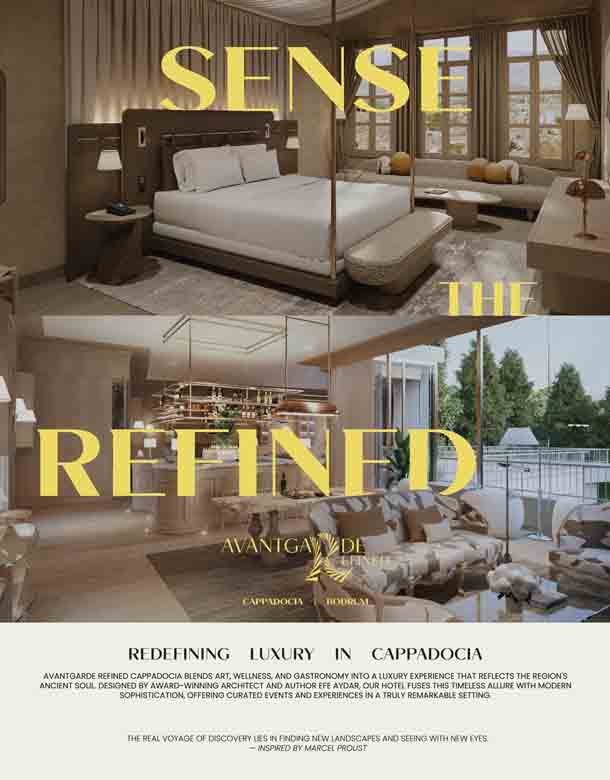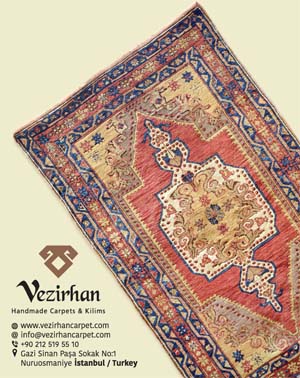After years of construction, the new Afyonkarahisar Archaeological Museum certainly exceeds long-awaited expectations. Founded in 1933, it was originally located in the historic city centre of Afyonkarahisar. Serving as a landmark of the area, it boasted a stunning collection of the region’s rich offerings spanning thousands of years. But eventually the collection grew to such an extent that the old building proved inadequate, and plans were drawn up for a new, larger building to showcase the wealth of its offerings.
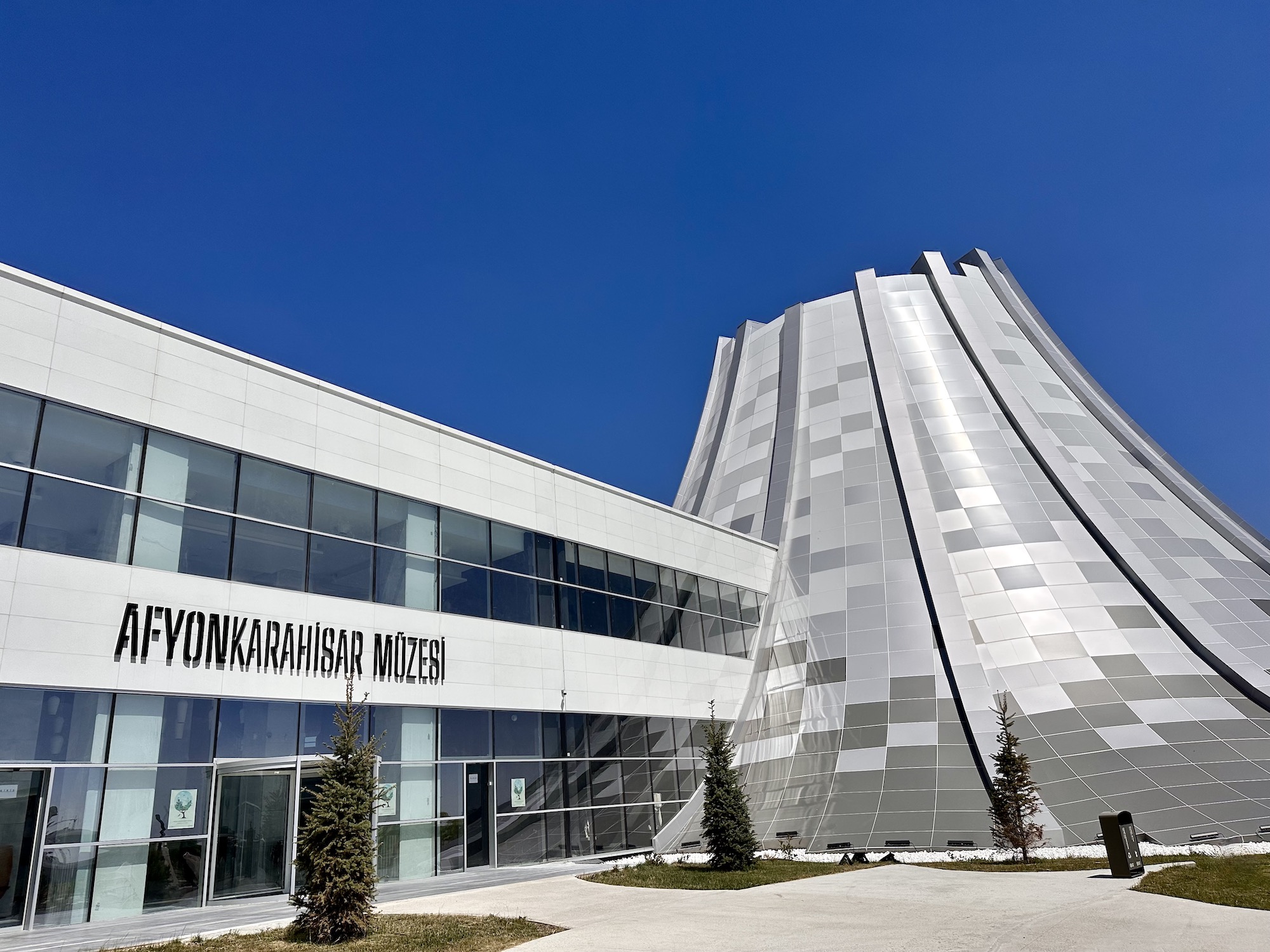
At firsyt glance the new building does not have the typical markings of an archaeology museum. Located about ten minutes outside the city, it is disconcertingly modern, with sleek lines and chrome finishes. Nevertheless, there are hints that tie it to Afyonkarahisar’s storied past. Mirroring the iconic ancient fortress that towers over the city on a colossal cliff, the focal point of the museum is a steel mound that houses the bulk of the permanent collection.
Despite its polarising exterior, the interior of the museum is a marvel of exhibition design, effortlessly guiding the viewer through the complex and varied history of Afyonkarahisar and its surrounding regions. Each of its five levels is devoted to a distinct era, beginning on the ground floor with the Paleolithic Age and ascending to the dawn of the Republic in the 20th century at its peak. A trove of artefacts from the Hittites, Phrygians, Lydians, Persians, Ottomans and more make for an engaging journey in the levels in between.
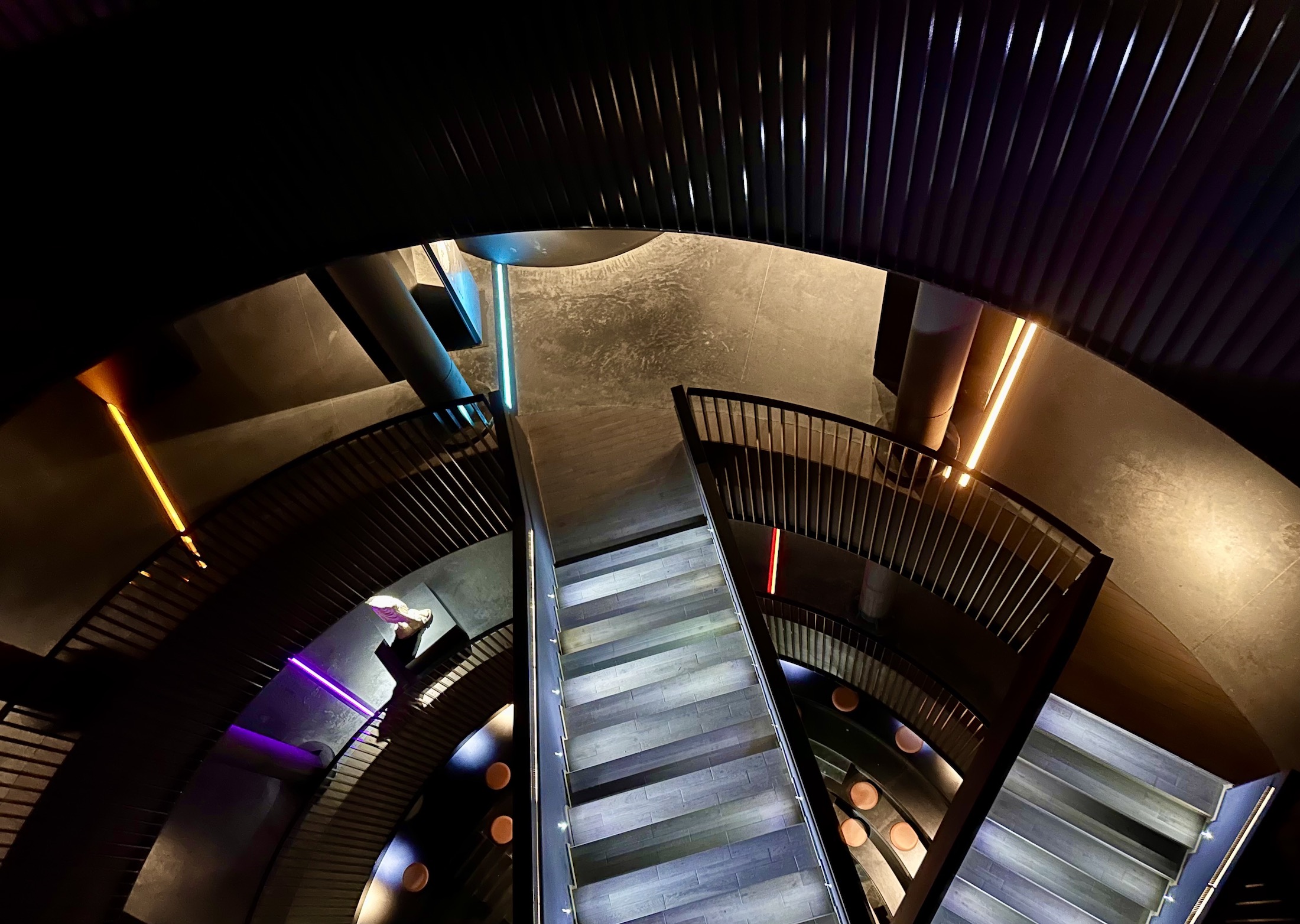
Filled to the brim with information, each exhibition carefully explains its respective period with highly detailed signs providing an overview of the region’s chronology and culture. Its softly-lit interiors add to the sense of immersion, allowing viewers to disconnect from the outside world and fully engage with the period. Lifelike models of ancient people and structures provide a sense of realism and create a visualisation of subject matter that can seem far-off and removed from reality.
The bottom two floors, covering the region’s ancient past, offer some of the collection‘s most intriguing items. At the entrance one is immediately greeted by a proud statue of Hercules, standing tall over the viewer. Further inside, anthropomorphic terracotta vessels with idiosyncratic faces date as far back as the Neolithic Age, while other prehistoric tools and wall etchings make up a rich collection. Passing slowly through the exhibition, the viewer also walks through time. Terracotta vessels gradually evolve into figurines of iconic Hellenistic figures, such as Aphrodite and Zeus.
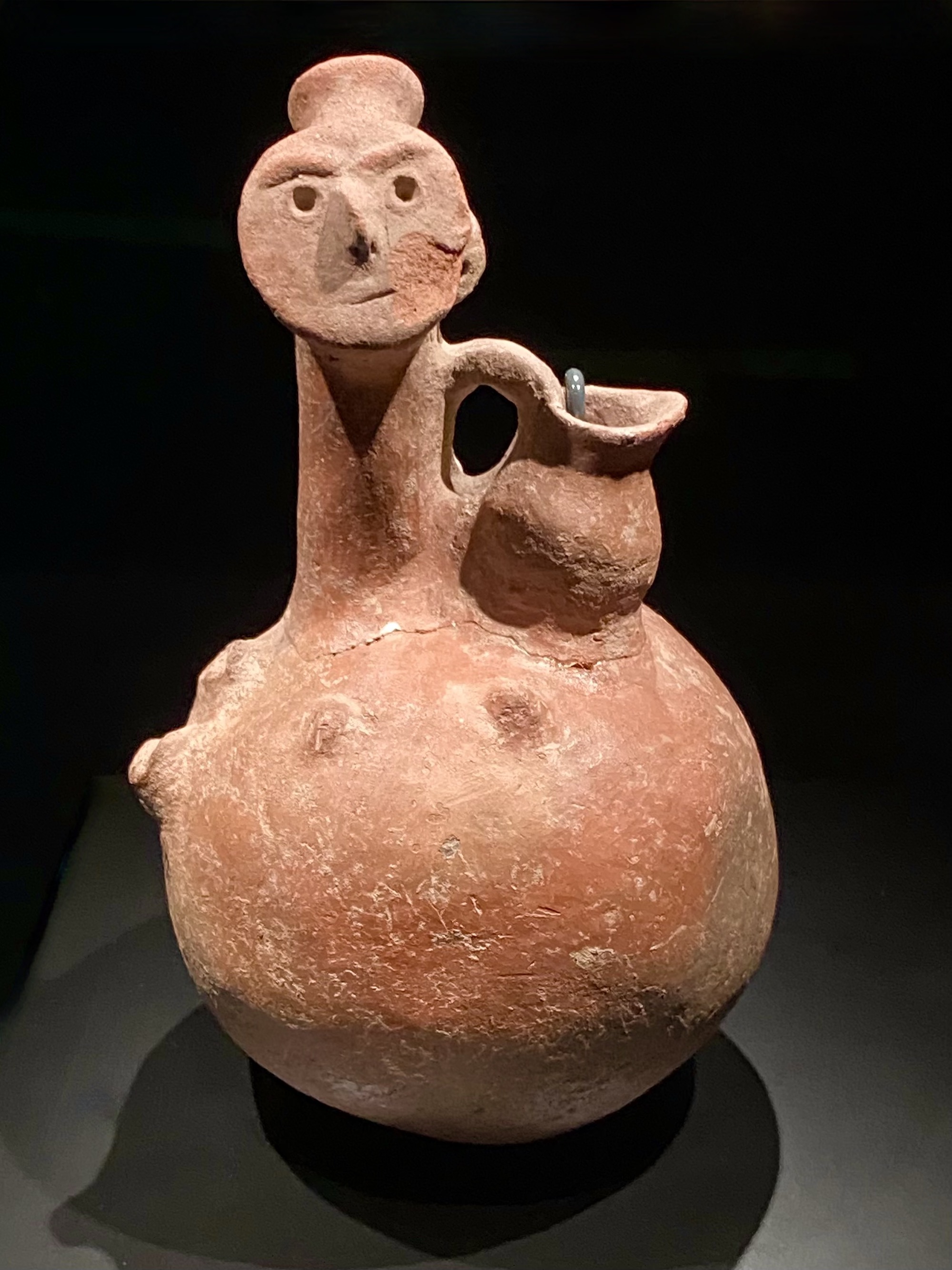
More than anything else, the museum delves into the role Afyonkarahisar played as a nexus of civilisations and empires. From the Hittites, who built the first empire in Anatolia, all the way to the Ottomans, Afyonkarahisar often served as a place of connection and rupture, where borders were drawn and contested. During the Byzantine Empire it was christened ‘Nicopolis’, or ‘city of victory’, after Leo III’s victory over Arab invaders. Over a thousand years later, in 1922, it would become the site of a momentous victory against Greece in the War of Independence.
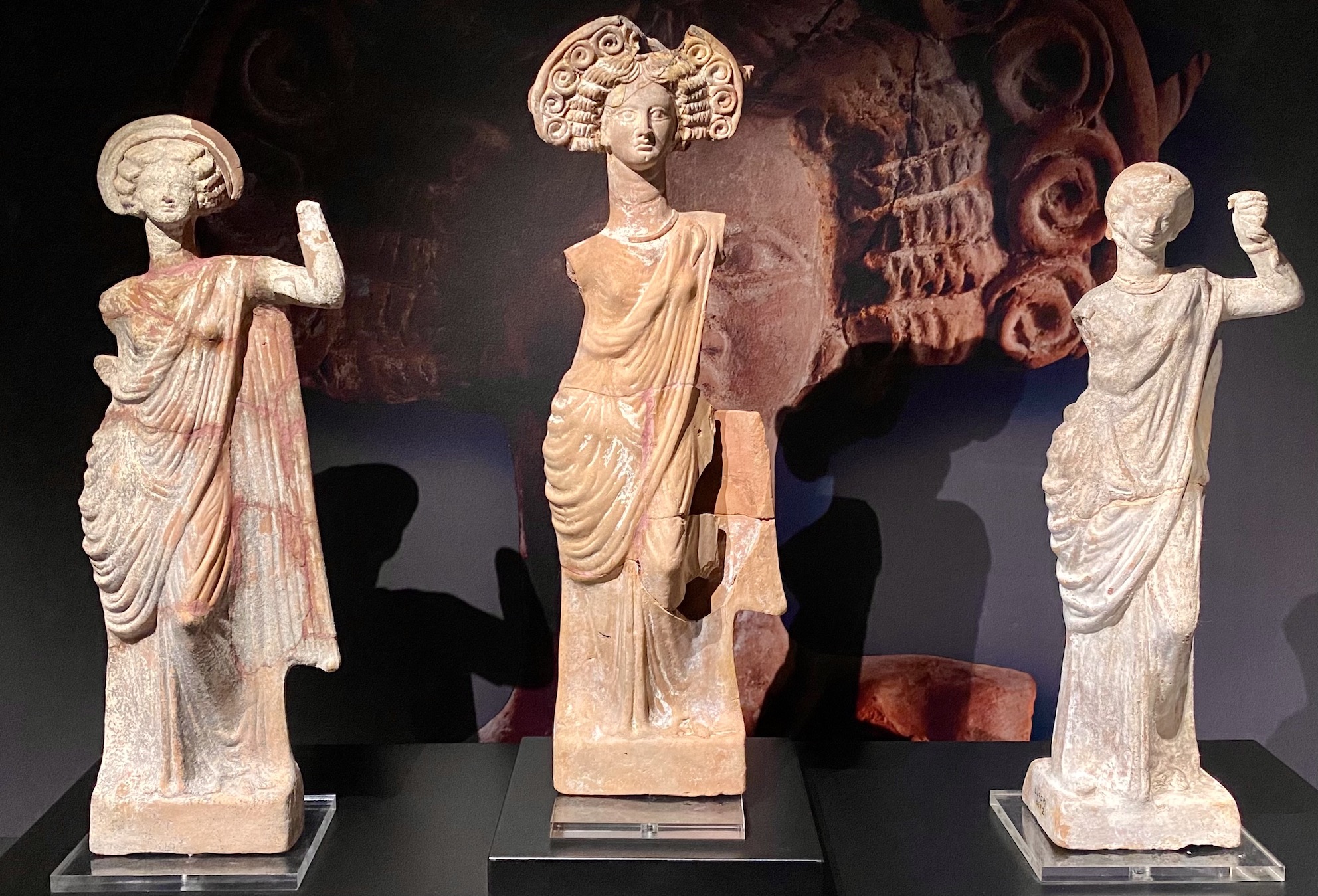
Despite the ambitious span of civilisations covered, the museum is still grounded in the regional history of Afyonkarahisar. One floor is devoted entirely to the culture of this often-overlooked Anatolian region, providing a glimpse into its traditional food, handicrafts, and religion. A look into the tradition of flat weavings, or rugs, reveals how distinct weaving styles were developed by each district. In terms of commerce, Afyonkarahisar has exported a diverse array of offerings over the years. Most notably, afyon (opium), its namesake, transformed the town into a wealthy city at the height of the Ottoman Empire. Today thermal-bath tourism and marble quarries dominate the city's economy, and it is known for its culinary offerings of sucuk (sausage), kaymaklı lokum (Turkish delight), and el açması börek (handmade pastry).
The Afyonkarahisar Archaeological Museum is open Tuesday to Sunday from 8 am to 5 pm. Located a day trip away from Istanbul and only a few hours’ drive south of Ankara, it is certainly worth the journey.







